From Generation To Generation 4321_Jeju 4·3 College Students Peace March
Inheriting the Jeju 4·3 spirit, we vow to take the lead in presenting future-oriented solutions.
Koh Anna
Commemorative Project Team, Jeju 4·3 Peace Foundation

The Jeju 4·3 Peace Foundation has carried out the Jeju 4·3 College Students Peace March for nine years. It also support local college students in Jeju in various programs to publicize the history and value of Jeju 4·3 during the memorial period on and around the Jeju 4·3 memorial ceremony. The 2023 project was remarkable because the number of students greatly increased from last year, and the participants actively engaged in making suggestions and requests for different programs. It was obvious that the students were desperate to let their schoolmates know about Jeju 4·3 and thought a lot about how to do it. They created an impressive scene where so many students gathered and spoke with one voice that it was difficult to capture in one picture. College students spoke out on each issue of Jeju 4·3, shouting for the truth about the tragedy and calling for the revision of the Jeju 4·3 Special Act. In the year that marks the 75th anniversary of the historical event, they vowed to play their role as the main players of passing down the spirit of Jeju 4·3 from one generation to another.
Response to attempts to defame Jeju 4·3 and distort history and efforts to publicize Jeju 4·3
Students of four universities in Jeju gathered to have a street march from Gwandeokjeong Pavilion to Jeju City Hall. On April 1, 2023, the Jeju 4·3 College Students Peace March was held by Jeju National University’s Student Union “Eoullim” (President Park Ju-yeong), Jeju Tourism University’s Student Union “Daol” (President Yoon Bo-ra), Jeju International University’s Student Union “Garam” (President Kim Hyeon-ji), and Cheju Halla University’s Board of Student Representatives “Harang” (Chairman Yang Gyeong-min). On the day, more than 260 local college students gathered at Gwandeokjeong Pavilion, with their representatives announcing the joint statement. On behalf of the local college students and other residents, the young intellectuals were united with one accord at the site where Jeju 4·3 began. Inheriting the movement to reveal the truth about Jeju 4·3, the student heads vow to take the lead in bringing a complete resolution to the historical issue. In the joint statement, they demanded that ill-intended groups stop making attempts to distort and defame historical truth and wished that the documentary heritage related to Jeju 4·3 would be inscribed on the UNESCO Memory of the World register. The students concluded their statement by emphasizing the need to clarify the responsibility of the United States Army Military Government in Korea in the atrocious massacres of Jeju residents and to persuade the United States to express sincere apologies. The gathering to announce the joint statement was followed by the street march that started from Gwandeokjeong Pavilion and passed through the intersections around Jungang Rotary and Gwangyang Rotary until the participants reached the front gate of Jeju City Hall. Those who joined the street march raised their voices, shouting, “Stop distorting the history of Jeju 4·3 and defaming the victims!”
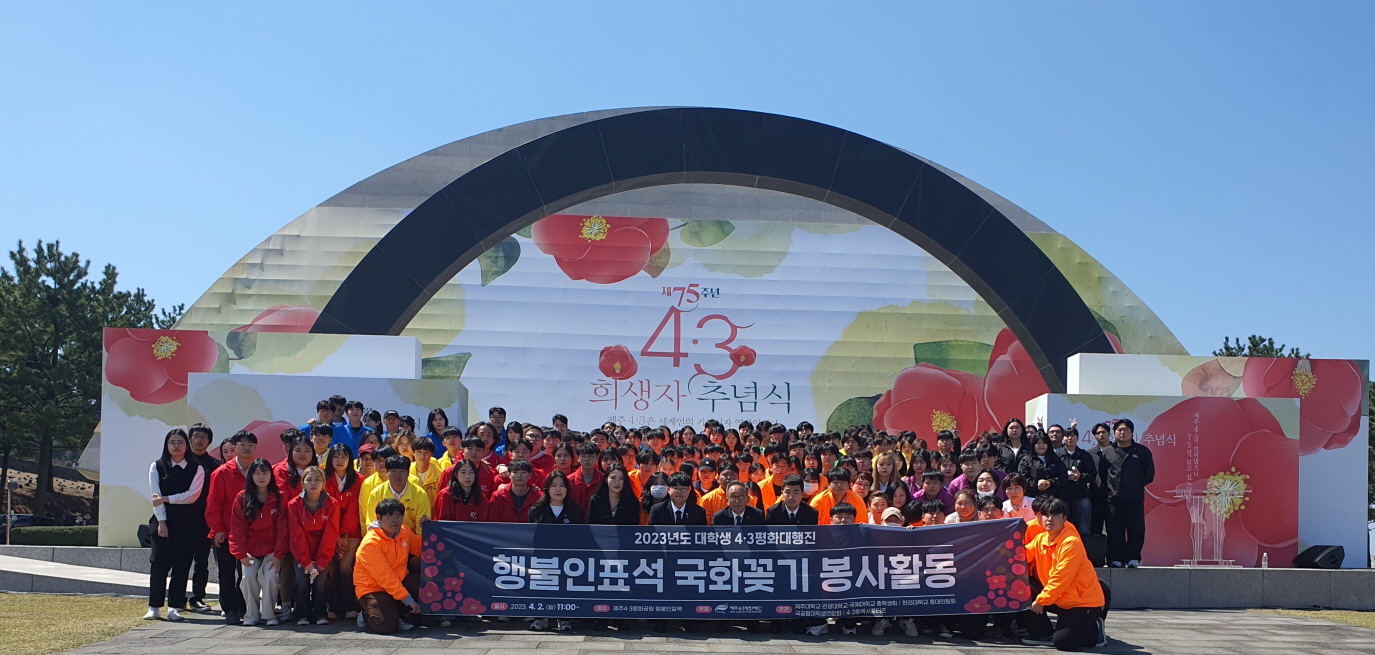


On the following day, some 180 students volunteered to place condolence flowers in front of 4,007 headstones for the missing Jeju 4·3 victims in the Jeju 4·3 Peace Park, praying for the rest of the souls of the deceased. The representatives of the Korea Confederation of National and Public Universities (headed by Kim Yo-seop, president of Busan National University Student Union) also joined the program and stayed with their peers until the memorial ceremony was over on the following day.
On April 3, all of the student representatives attended the memorial ceremony marking the 75th anniversary of Jeju 4·3. Once again, they vowed to fulfill their roles and responsibilities as the main players of intergenerational transition of Jeju 4·3. Earlier on the day, the mourners to the memorial event and other Jeju residents were startled by the disturbance due to a planned rally by the self-proclaimed Northwest Youth League. College students responded by holding a picket that read “Stop hurting the victims’ families by defaming Jeju 4·3.” Their demonstration echoed not only the bereaved families who attended the memorial ceremony for the first time in a few years due to the pandemic but also other adults on the event site who were watching the situation. Kim Yo-seop, president of Busan National University Student Union (representative of the Korea Confederation of National and Public Universities), said: “I attended the memorial ceremony after volunteering to place condolence flowers in the graveyard for the missing victims. Thank you for allowing me to have a valuable time to learn and think about Jeju’s history. I sincerely hope that the remaining problems related to Jeju 4·3 solved can be resolved as soon as possible and that Jeju 4·3 can become a product of peace and coexistence, not of ideological and political confrontations. We, college students, will also try to remember Jeju 4·3 and become a generation with one heart,” he said.
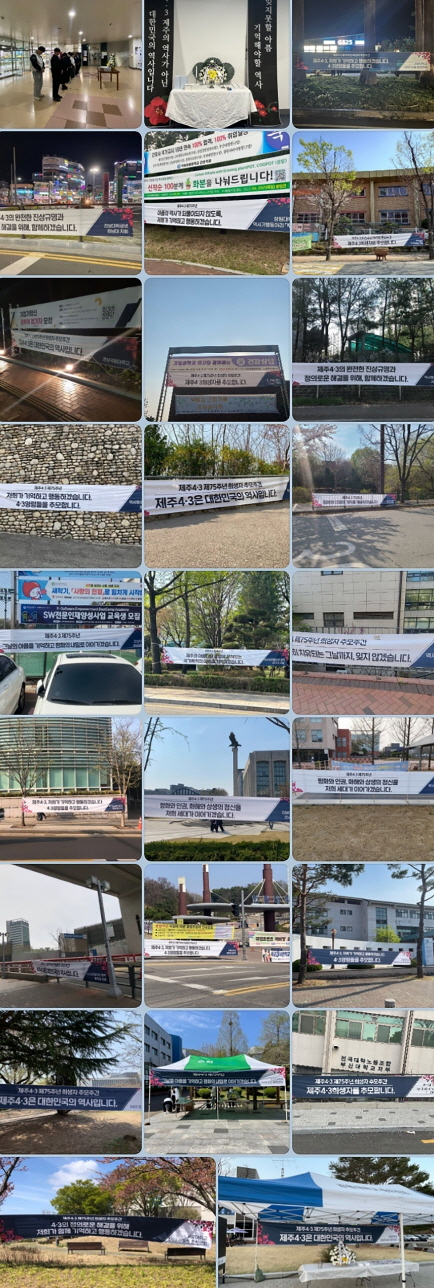
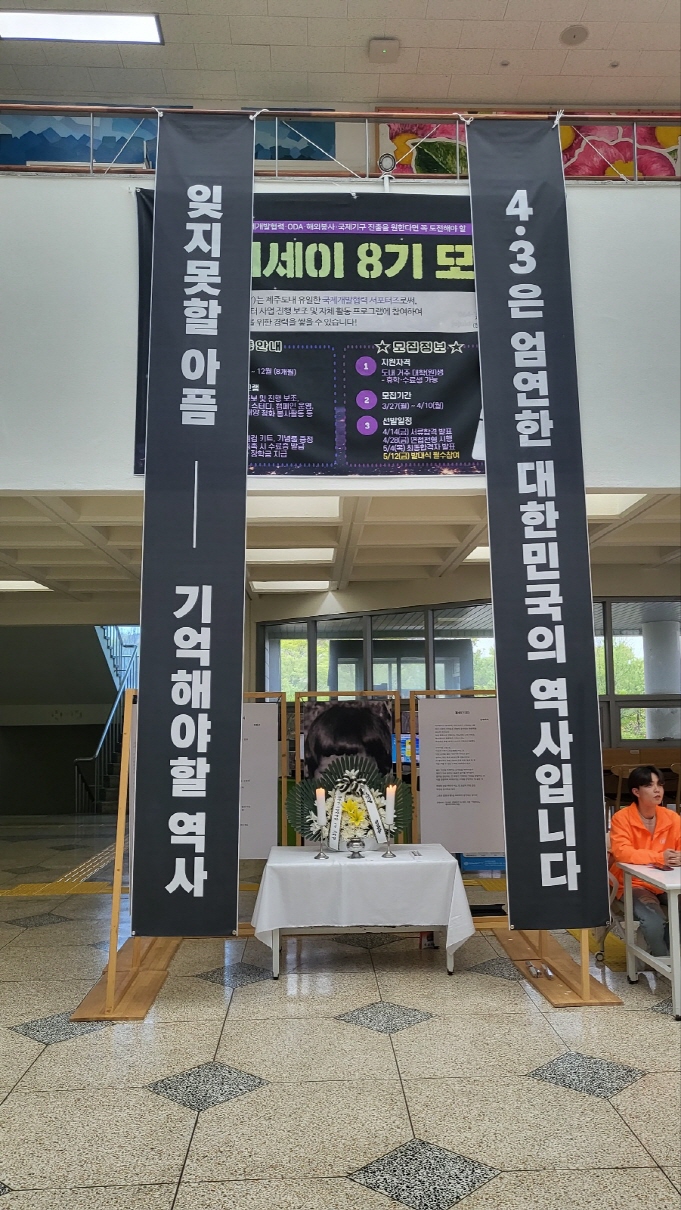

 During the memorial period, Jeju National University ran various memorial programs on campus. The university’s Student Union installed a memorial altar and a Jeju 4·3 Postbox on the first-floor lobby of the Student Union Hall. Students were encouraged to share their thoughts and ideas about Jeju 4·3 by using the postbox. Some of their letters were sent to victims’ families on May 4, and some others were placed at the Jeju 4·3 Little Exhibition Hall.
During the memorial period, Jeju National University ran various memorial programs on campus. The university’s Student Union installed a memorial altar and a Jeju 4·3 Postbox on the first-floor lobby of the Student Union Hall. Students were encouraged to share their thoughts and ideas about Jeju 4·3 by using the postbox. Some of their letters were sent to victims’ families on May 4, and some others were placed at the Jeju 4·3 Little Exhibition Hall.
The student council installed a April 3 post box along with a memorial altar on the first floor of the student hall, where students attend the most. Each student could freely write down what they thought and put it in the mailbox, and some of them were delivered to the April 3 Victims’ Family Association on May 4, and some were displayed in the April 3 small exhibition hall.
Jeju National University also prepared various activities and programs, including △ Jeju 4·3 Book Exhibition and Talk Concert (College of Humanities) △ Panel Exhibition on the Progression of Jeju 4·3 (College of Ocean Sciences) △ Screening of “Jiseul” and Special Lecture on Jeju 4·3 (College of Social Sciences) △ Jeju 4·3 Bulletin Board “Jeju, Colored with Peace” (College of Education) and △ Jeju 4·3 Trail Walking in Bukchon (College of Applied Life Sciences).
In addition, promotional booths were set up at the Student Union Hall during the memorial period, under the theme of “Let’s learn about Jeju 4·3.” Students made various approaches to learning about Jeju 4·3 by participating in different programs, such as: △ Making a Camellia Diffuser (College of Economics and Commerce) △ Making a Camellia Ring and a Memorial Ribbon (College of Natural Sciences) and △ Decorating the National Flag with Camellia Flowers and Picketing to Denounce Far-rightist Attempts to Defame Jeju 4·3 (Jeju 4·3 Peace Foundation’s Camellia Supporters).

 Memorial ceremony joined by college students nationwide
Memorial ceremony joined by college students nationwide
The student unions and history clubs of 39 colleges around Korea, including those of national or public universities, educational colleges, and four Jeju-based colleges hung memorial banners on campus for Jeju 4·3 victims. Thirteen colleges set up and operated a memorial altar for the Jeju 4·3 victims in their respective Student Union Halls or in other sites on campus.
Participating universities and student clubs include: △ Jeju National University △ Jeju Tourism University △ Cheju Halla University △ Jeju International University △ Seoul National University △ Busan National University △ Chungnam National University △ Korea Transportation University △ Korea National University of Cultural Heritage △ Hanbat University △ Kangwon National University △ Kunsan National University △ Mokpo National University △ Sunchon National University △ Jeju National University’s Teachers’ College (Sara Campus) △ Gwangju National University of Education △ Busan National University of Education △ Seoul National University of Education △ Jeonju National University △ Korea National University of Education △ History Club ‘Sadari’ (Dongguk University, Hanyang University, Sookmyung Women’s University, Seoul Women’s University, Ewha Womans University, Incheon National University) △ Issue Photo Club ‘Chalkak’ (Konkuk University, Hongik University, Paju Typography Institute, Kyung Hee University) △ Jinbo College Student Network (Yonsei University, Sungkyunkwan University, SungKongHoe University, Kyungnam University) △ UnivWing (Hallym University, Chuncheon National University of Education) △ Jinju National University of Education’s History Club ‘Yeokdong’ △ Gyeongsang National University’s History Club ‘Interference of History’ △ Changwon National University’s History and Travel Club ‘Root’.
Jeju University’s Student Union held the Korea College Students Jeju 4·3 Contest, a contest for works in the categories of poetry and video images that lasted for a month. Applications were received from 184 students at 55 universities in the poetry category, while 5 students at 5 universities competed for the contest in the video images category. The award ceremony was held on May 13 at the Jeju 4·3 Peace Memorial Hall, and the winners in the poetry category include: △ Grand Prize (Ko Do-yeong, Jeju National University) △ Best Prize (Kim Jae-hyeon, Jeju National University; Ko Hee-ju, Sungkyunkwan University) △ Excellence Prize (Lee San-ha, Gyeongsang National University; Ko Joon-hyeok, Jeju National University; Kim Jeong-eun, Cheju Halla University; Kim Tae-hoon, Gyeongsang National University). The video images announced five winners for: △ Excellence Prize (Kang Jae-seong, Jeju National University; Lee I-rang, Kangwon National University).
In addition, an online relay event, titled “Let’s Keep Memories of Jeju 4·3,” was held for the registration of documents related to Jeju 4·3 as a documentary heritage recognized by UNESCO’s Memory of the World programme. Participants shared a handwritten note on social media that read “I pray that the documentary heritage of Jeju 4·3 representing the values of peace, human rights, and mutual prosperity will be inscribed in the UNESCO Memory of the World register.” The program was intended to provide an opportunity to inform college students across the country of the value of Jeju 4·3-related documents.
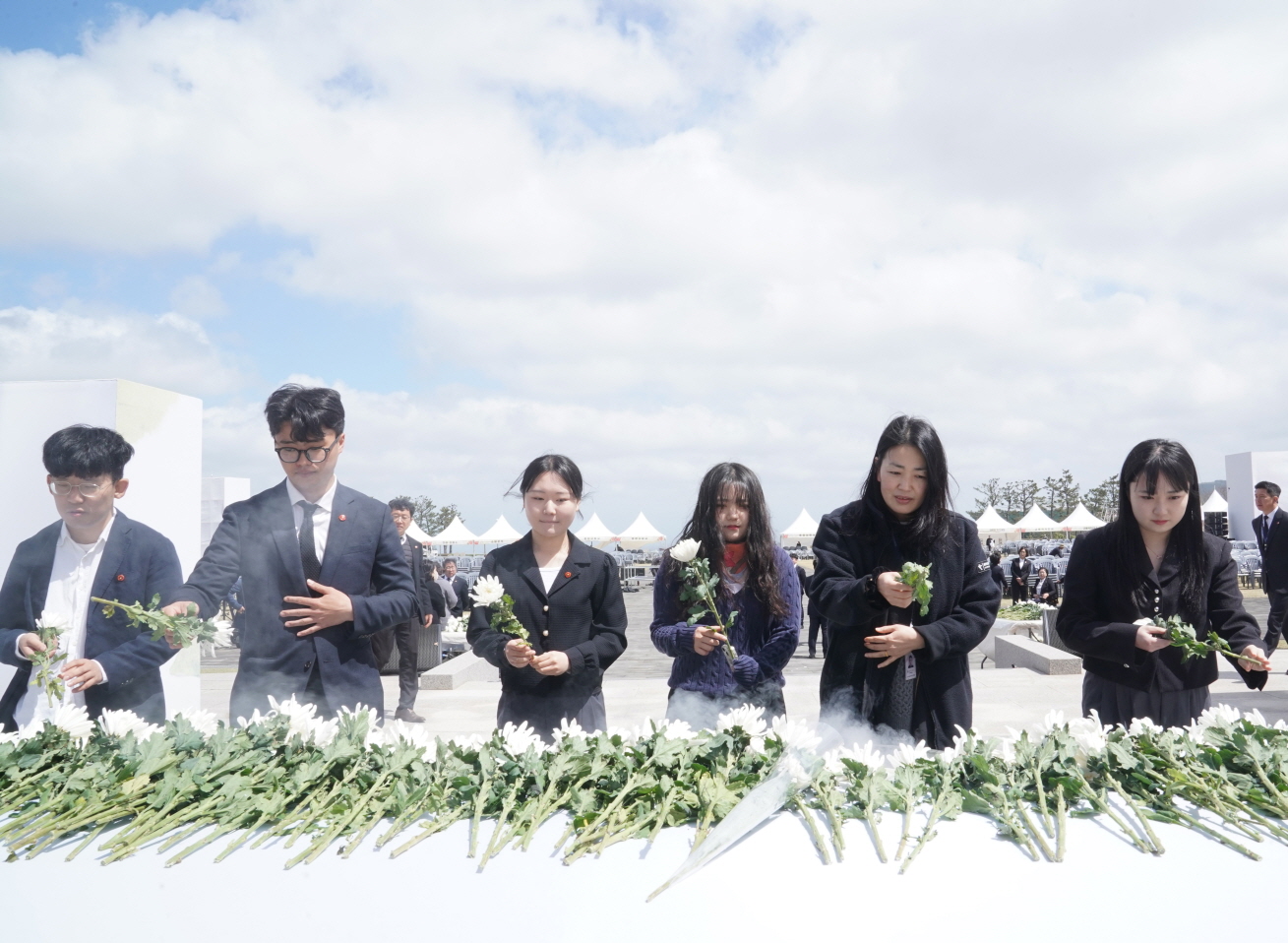 Young Jeju locals established themselves as the key players of intergenerational transition of Jeju 4·3
Young Jeju locals established themselves as the key players of intergenerational transition of Jeju 4·3
Park Ju-yeong, president of Jeju National University’s Student Union, said: “This year, there emerged various issues such as the attempt to distort the history of Jeju 4·3 and disparage the victims and the promotion of the need to have the documentary heritage of Jeju 4·3 be added to the UNESCO Memory of the World register. Therefore, I felt a strong sense of responsibility that college students, who are the key players of intergenerational transition of Jeju 4·3, should respond sensitively to the emerging issues. We will continue to make concerted efforts to remember Jeju 4·3 as representing the value of reconciliation and mutual prosperity.”
This year will be marked with various exceptional cases of defaming Jeju 4·3 victims. On all occasions, members of Jeju National University’s Student Union and other college students delivered their messages explicitly. It is true that there have been concerns and complaints that college students may hold one-time events in April. However, the student unions of local colleges in Jeju have tried to inform students of Jeju 4·3 and draw consensus on the related issues. Wouldn’t it be possible because they could follow the footsteps left by their foregoers who pondered upon the issues year after year, month after month, and day after day? It was thanks to their aspirations and solidarity built up over the long period of time that enabled the discovery of the 75-long history of Jeju 4·3 and the exoneration of the victims. Although the situation may have changed, local college students still value the spirit of Jeju 4·3 at all times.
They will continue to march next year, taking advantage of what they practiced this year.
++ College students march from Gwandeokjeong Pavilion to Jeju City Hall (top).
++ Student unions of four universities in Jeju issue a joint statement for the 2023 Jeju 4·3 Peace March for College Students (left).
++ Students take a commemorative photo after volunteering to place chrysanthemum in front of the Tombstones for the Missing (right in the center).
++ As the self-proclaimed Northwest Youth League try to hold a rally on the road in front of the Jeju 4·3 Peace Park where the memorial ceremony is held, local college students are picketing to stop them from hurting the bereaved families by defaming Jeju 4·3 victims (lower right).
++ Memorial banners for Jeju 4·3 victims are hung by 39 colleges nationwide (left).
++ A memorial altar and a postbox are installed under the theme of Jeju 4·3 on the first floor of the Jeju National University Student Hall (above).
++ South Korea’s national flag is hung at Jeju National University. The flag was decorated with camellia flowers by the 6th-year members of Jeju 4·3 Peace Foundation’s Camellia Supporters (above).
++ 2023 Jeju 4·3 Poster Contest for College Students (below).
 ++ The musical team for “The Great April” gives a greeting onstage.
++ The musical team for “The Great April” gives a greeting onstage.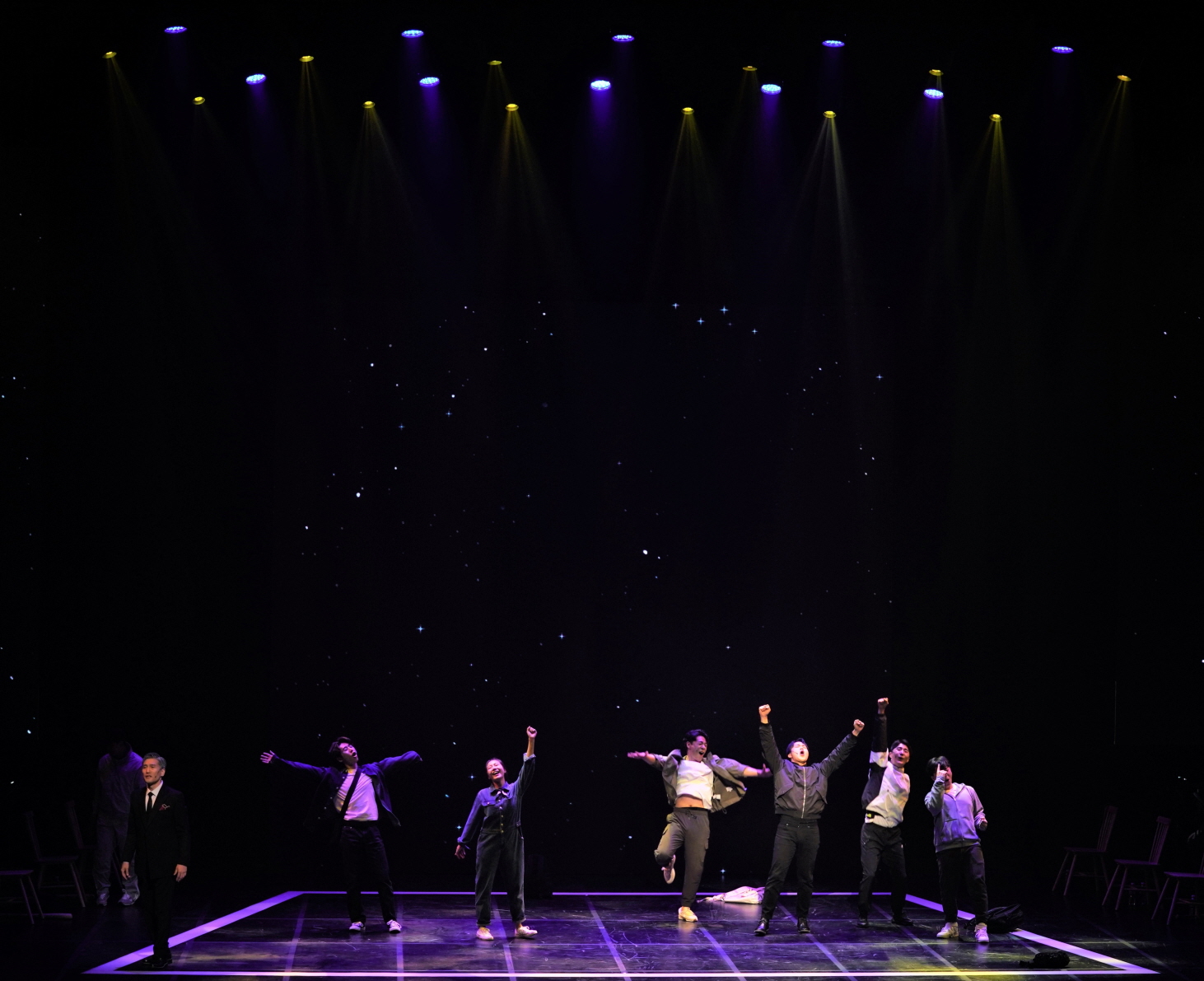 ++ The musical team performs “The Great April” onstage.
++ The musical team performs “The Great April” onstage.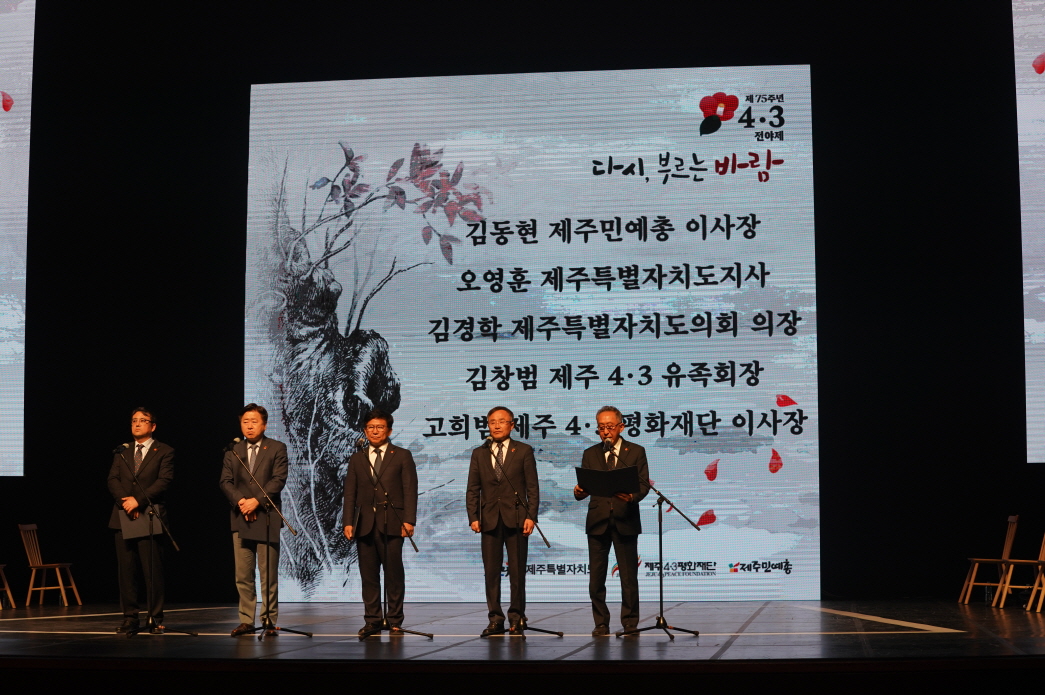
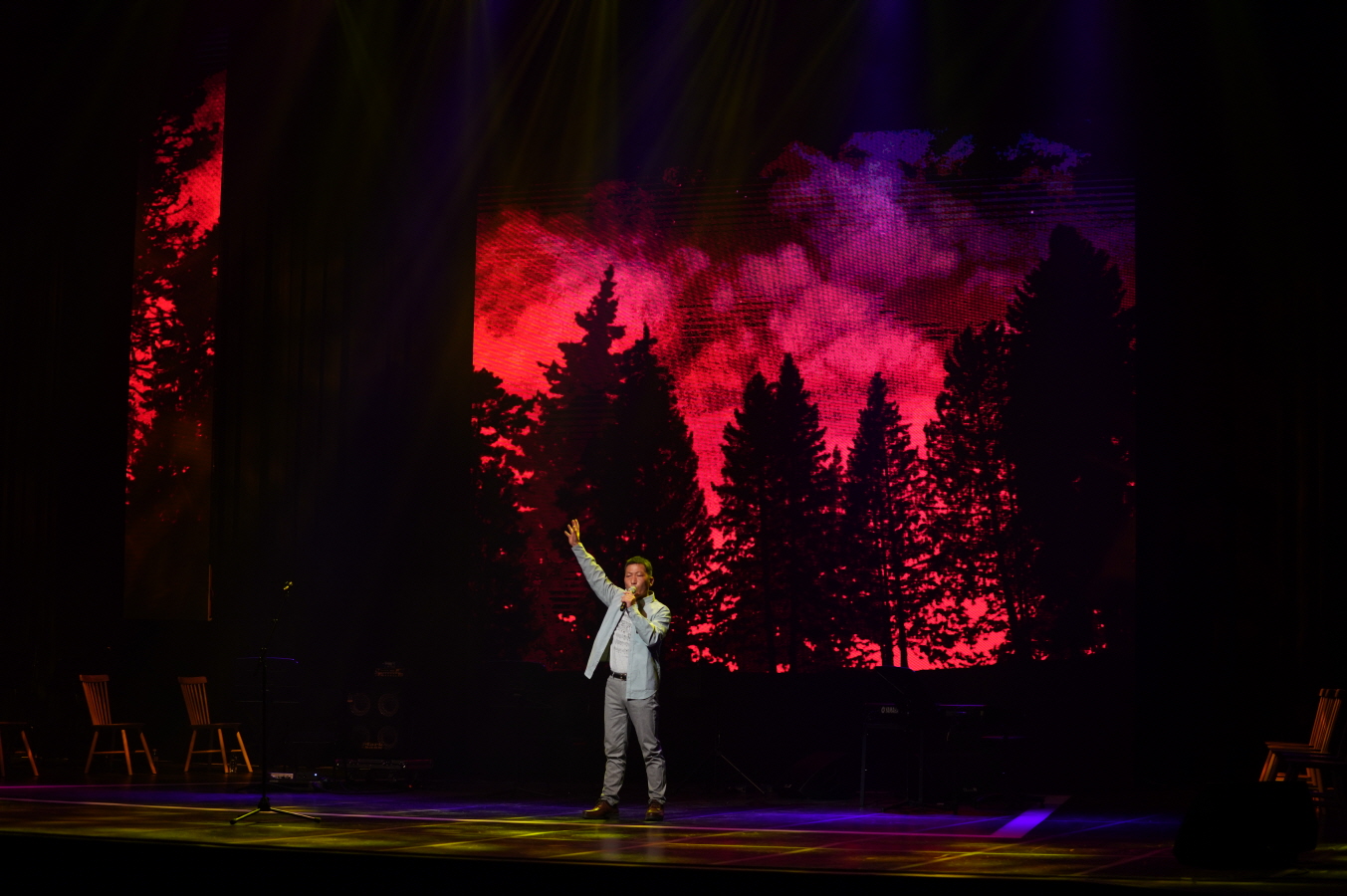 ++ Singer Choi Sang-don is singing “The Song of Baby Camellia.”
++ Singer Choi Sang-don is singing “The Song of Baby Camellia.”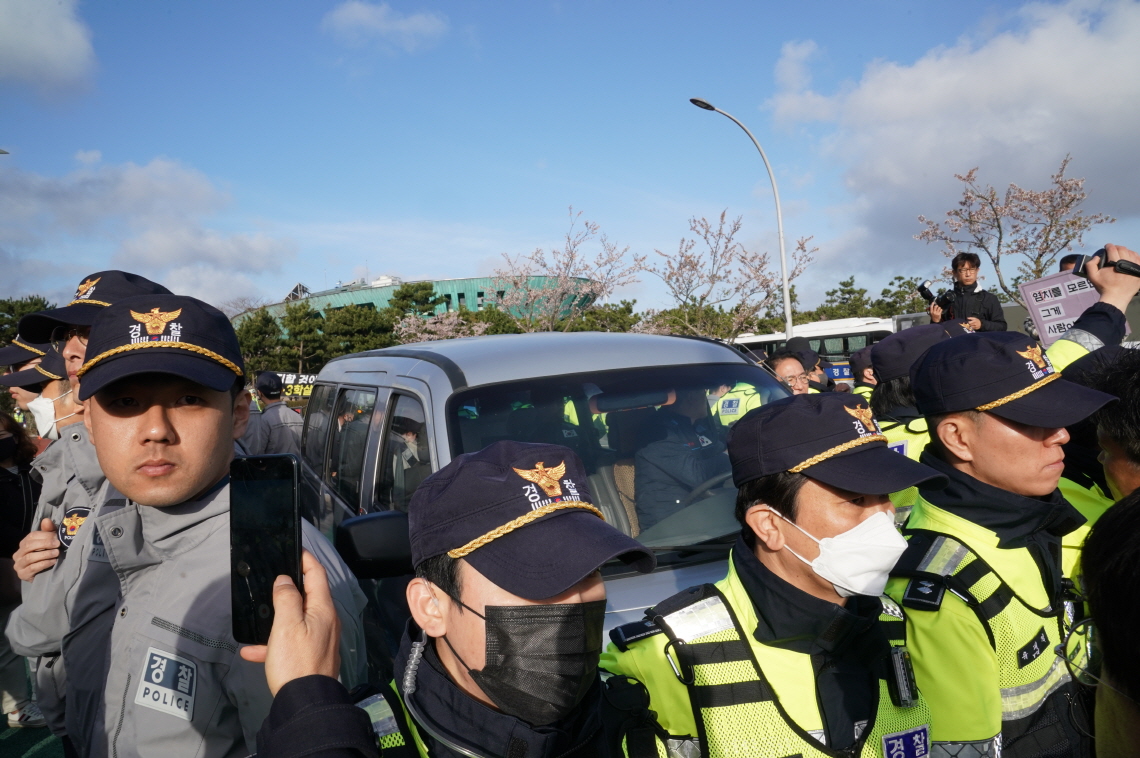
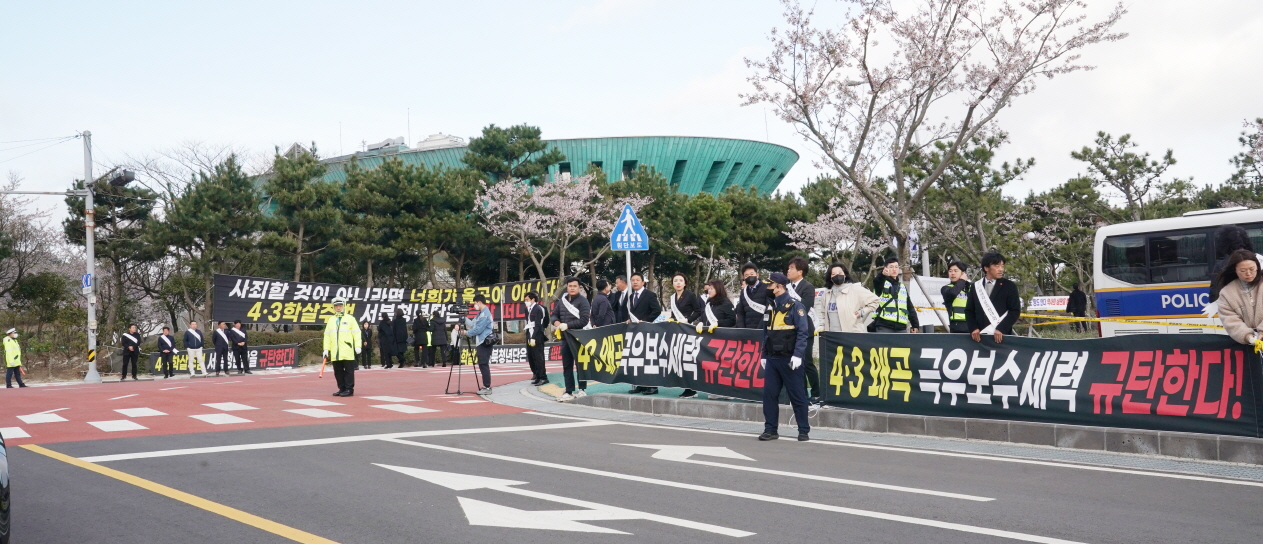
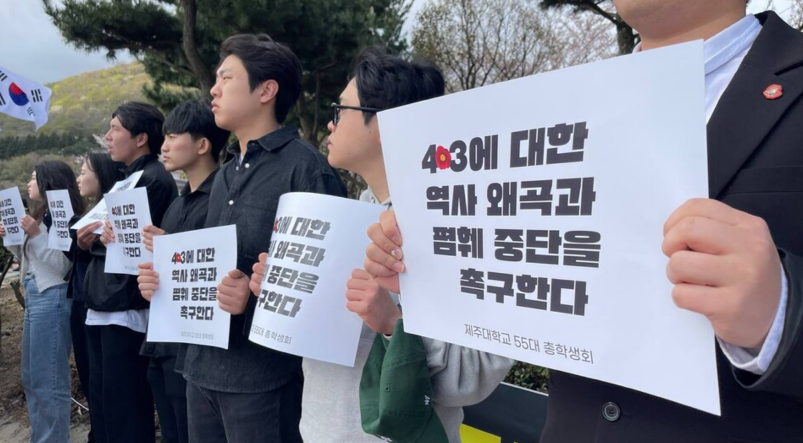 ++ Students from Jeju National University’s student union are picketing.
++ Students from Jeju National University’s student union are picketing.